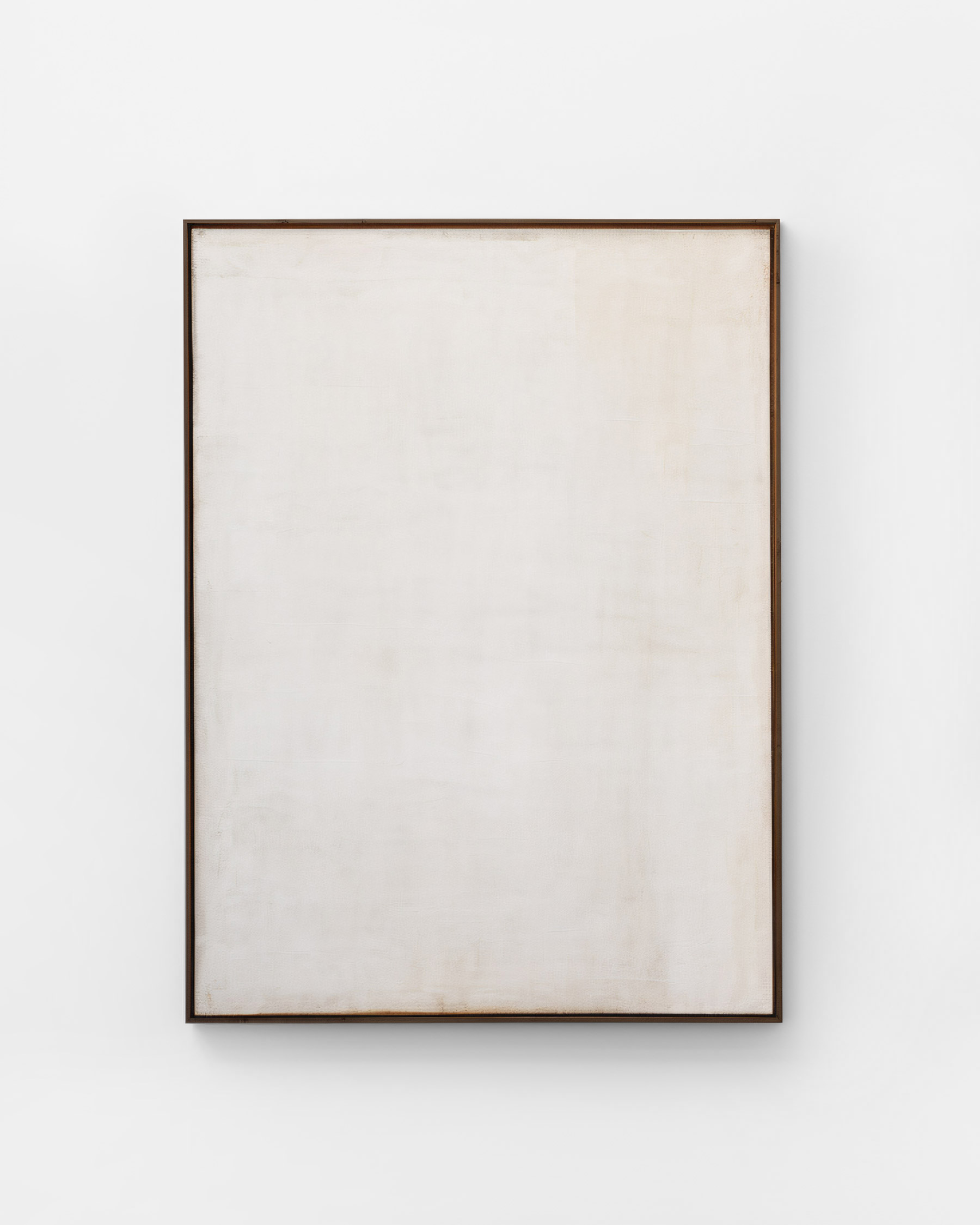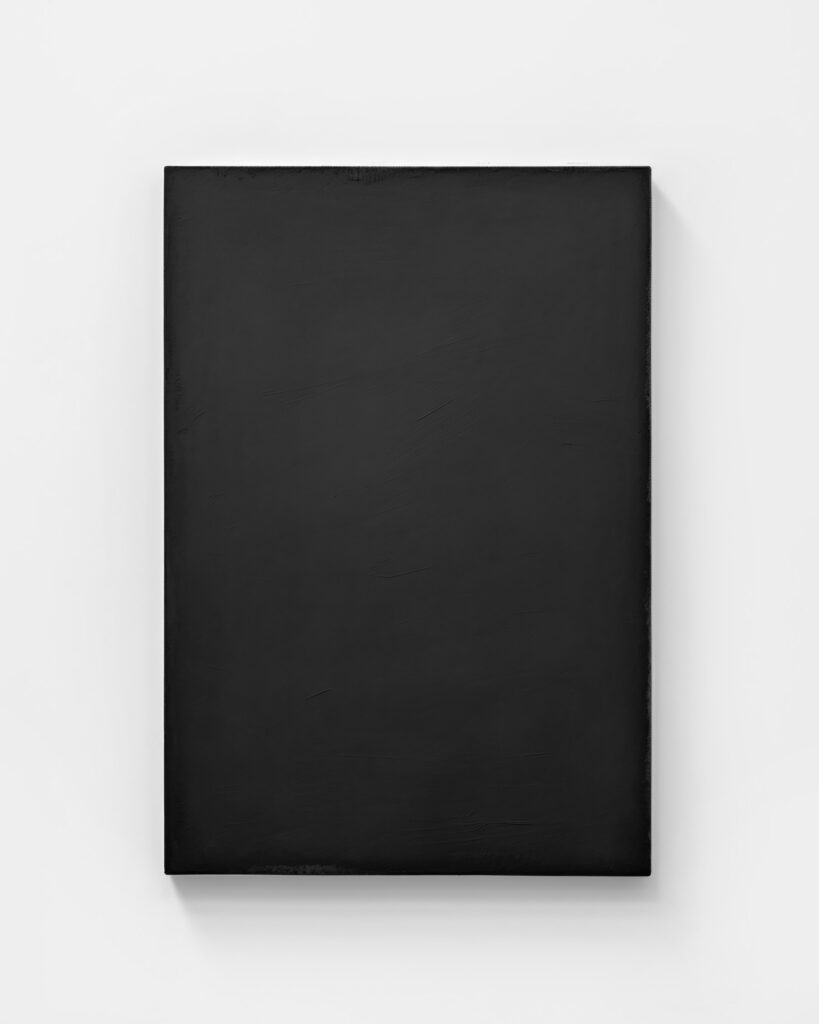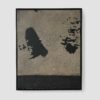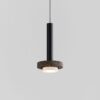The concept of emptiness is a fascinating paradox – for some, it is an invitation, a symbol of freedom and infinite possibilities. For others, emptiness evokes a feeling of insecurity and fear, a state that should be avoided if possible. The term “horror vacui” illustrates this discomfort in dealing with the void. Today, it is used in art to describe the tendency of artists to fill space with an excess of detail so that hardly any empty space remains visible. Originally coined by Aristotle to explain the absence of emptiness (vacuum) in nature, the Italian art critic Mario Praz took it up in the 20th century and transferred it to the art world. He used it above all to criticize the excessive and overloaded decorative style of the Victorian era.1
The beginning of Abstract Art in the early 20th century led to a new direction in creative expression. As time passed, more and more artists explored the concept of emptiness. However, they often encountered negative reactions, as many of their works fell victim to controversial debates and even willful destruction. So where does this fear of emptiness come from? Why do people perceive it so differently? And why does it mean for many the absence of something that existed before, rather than a space full of possibilities?
At this point, I would like to mention that I am once again only scratching the surface of this incredibly complex topic. However, I must ask myself again whether my goal is to write a “scientific dissertation” on this topic, or do I want to provide an introduction for all those interested through a relatively “superficial” examination? I have decided, once again, for the latter. For anyone who wishes to delve deeper into the subject, I have listed and linked all my sources at the end of this essay.
The ambiguity of emptiness
Throughout the centuries, the concept of emptiness (which stands for the philosophical concept of nothingness) has played a central role in philosophy and theology. Philosophers such as Plato, Kant, Hegel, Heidegger and Sartre, as well as Christian texts in the Bible, have each explored different interpretations and meanings of emptiness and illuminated it from different points of view. In the Christian view, for example, the void is often understood as the opposite of the fullness of life and the presence of God.2
In our Western culture, emptiness is typically negatively connotated. It is synonymous with loss, nothingness, the void, but also abandonment and loneliness. In contrast, the concept of emptiness in Eastern philosophies, especially in Taoism, Buddhism, and Shintoism, is considered a positive state. In Buddhism, for example, emptiness (śūnyatā) is regarded as an insight into the nature of reality. Nothing possesses intrinsic reality. Everything, including emptiness itself, exists only conditionally and is dependent on other phenomena.3 Or in simple terms: everything is interconnected and therefore changeable. This emptiness contains all the possibilities for positive qualities such as wisdom, happiness, compassion, clarity, and courage (emptiness in the context of Buddha Nature).4
In Eastern art and aesthetics, especially in China and Japan, deliberately empty space (yohaku-no-bi, 余白の美) is considered an essential component of art. And the term “Ma” (間) is a concept in Japanese art and culture that emphasizes space that is deliberately left empty. In modern interpretations, this empty space is not considered an absence, but as an essential part of the work, charged with potential and meaning.5 These positive connotations are in complete contrast to the “horror vacui” of the Western art tradition. The fact that these perspectives are so different shows how wide the range of interpretations of emptiness can be, and how strongly it is shaped by cultural influences.


Emptiness in minimalist art
As briefly mentioned above, more and more artists in the Western world began embracing the concept at the beginning of the 20th century. Artists such as Kandinsky, Malevich and Mondrian, among others, were the first to deal with deliberately “empty” elements in their works. For them, these free spaces offered endless possibilities.6 The best known of these was Kazimir Malevich, who, with his Black Square and the newly founded Suprematism, described emptiness as the “zero point of art”. For him, the black square symbolized pure feeling, while the white field around it represented the infinite void or the space that existed beyond this feeling.7 He was thus one of the first to artistically implement the philosophical and spiritual concept of emptiness.
The Swiss sculptor Alberto Giacometti also attempted to capture this emptiness with his sculpture “L’objet invisible” (in English: “Hands holding the void”) in 1934/1935. It is an abstract representation of a seated person trying to hold the void with both hands. For Giacometti, this work was a turning point that prompted him to move away from Surrealism and the Avant-garde towards a stronger focus on phenomenology. The human experience, including physical movements and sensory perceptions, eventually became the focus of his works.8
In the 1950s, the New York art scene experienced a veritable “Zen boom”, which inspired many artists such as Agnes Martin and Ad Reinhardt to engage with Eastern philosophy and the concept of emptiness.9 They put their findings into practice both artistically and in writing. Agnes Martin, for example, found her spiritual inspiration not only in Zen, but also in Taoism.10 With an empty mind – free of ideas and the ego – she created her works by concentrating entirely on the act of painting.11 Her minimalist works, especially works like “Untitled” from 1959 bear witness to this mindset and radiate an incredible calm and harmony.
In 1958, Yves Klein, who became particularly famous for his monochrome blue paintings, presented an exhibition entitled “Le vide” (in English: “The Void”) at the Iris Clert Gallery in Paris. Instead of traditional works of art, Klein presented an empty, white-painted room. Visitors were to experience the essence of “emptiness” itself as art. In the Minimal Art movement of the 1960s in America, the empty space around and between the objects was considered an active element that contributed to the overall design of the artwork. Artists such as Donald Judd and Tony Smith invited the viewer to explore this relationship between form, space, and environment.
Tony Smith’s work focused primarily on the relationship between form and emptiness. He was particularly interested in how his sculptures defined, structured and influenced the empty space around them.12 For Smith, there was an inseparable connection and interplay between the solid material (the bodies) and the void (the empty space).
Some artists of the Dansaekhwa movement in South-Korea also explored the concept of emptiness in their work. Lee Ufan’s art is about the relationships between objects, the void, and the space in between – in a physical, philosophical and spiritual sense.13 He explores these aspects not only in his well-known sculptures, but especially in his painted series “Dialogue” and “Correspondence”. Park Seo-Bo, another representative of this movement, sees art as a process of “emptying the self”, a cultivation of the mind and body to create comfort for people in empty space.14
A contemporary artist who focuses particularly on the concept of emptiness is Anish Kapoor. For him, the empty space is not simply the absence of matter, but rather a place of potential. Through his sculptures and installations, he creates spaces of emptiness that invite the viewer to think beyond the visible and engage with deeper philosophical and existential questions.15
That’s what I am interested in: the void, the moment when it isn’t a hole, it is a space full of what isn’t there.
Anish Kapoor in an interview with The Guardian
Emptiness as a mirror
The exploration of the concept of emptiness in minimalist art is an essential contribution to the expansion of our understanding of art as an introspective and philosophical tool. Artists such as Malevich, Martin, Klein, Kapoor, and representatives of the Minimal Art and Dansaekhwa movements have understood emptiness not as an absence, but as a space full of potential.
Ultimately, the perception of emptiness depends on the individual and their personal experiences, their subjective interpretation, and their personal values. It can reflect our innermost thoughts like a mirror. Especially in today’s era, where we are exposed to a multitude of visual stimuli, viewing “empty” art is therefore an important invitation that should not be turned down. But perhaps this is one of the reasons why minimalist art is so controversial.
For me personally, emptiness is an incredibly inspiring space full of possibilities. It invites me to pause, to feel and to perceive. For me, art with a minimalist aesthetic is often like an external tool for reaching these inner insights. The emptiness in minimalist art does not distract my thoughts, but anchors me in the present as I contemplate it. The fear of emptiness or the so-called “horror vacui” is therefore more than an aesthetic phenomenon; it can become a representation of human fears. But our conscious confrontation with these fears is an invitation to find a way to a deeper connection with ourselves and the world around us.
Further Reading / Resources
- https://en.wikipedia.org/wiki/Horror_vacui_(art)
- https://thewitness.org/what-does-the-bible-say-about-void/
- Taliesin T. Thomas, Art-Voids: Contemplating Emptiness in Contemporary Art, p.8
- https://www.huffpost.com/entry/emptiness-most-misunderstood-word-in-buddhism_b_2769189
- https://en.wikipedia.org/wiki/Ma_(negative_space)
- https://www.kunstsammlung.de/de/exhibitions-archive/kandinsky-malewitsch-mondrian-der-weisse-abgrund-unendlichkeit-quadriennale-duesseldorf
- Kazimir Malevich, The Non-Objective World, Theobald, 1959, p. 76
- https://www.schirn.de/magazin/kontext/giacometti_nauman/alberto_giacometti_bruce_nauman_die_leere/
- Romina Dümler, Barbara Könches, Meeting the Monochrome ZERO and Dansaekhwa, p.11 ff
- https://www.guggenheim.org/teaching-materials/agnes-martin
- https://www.theartblog.org/2016/11/solitary-lines-agnes-martin-at-the-guggenheim/
- https://www.ideelart.com/magazine/tony-smith
- https://www.aesence.com/lee-ufan-hamburger-bahnhof-berlin/
- SIM Eunlog, Park Seo-Bo, Writing Colors(色) Over Emptiness (空)
- https://anishkapoor.com/185/making-emptiness-by-homi-k-bhabha
- Werner Vogd und Jonathan Harth, Die Praxis der Leere via nomos elibrary
- https://www.izauk.org/multimedia-archive/ask-a-godo-what-is-ku/


